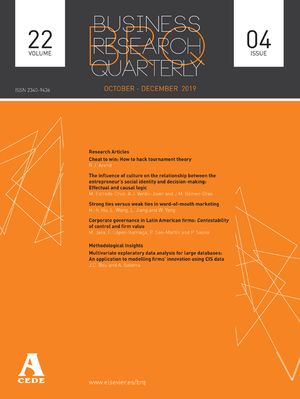Este estudio analiza la relación entre la sensibilidad del vendedor (SV) a la reclamación del cliente y sus comportamientos postqueja: intención de recompra, comunicación oral e informal –WOM– (positiva, negativa), queja (intención futura, ante terceros) y abandono. Desarrollamos un indicador para medir su percepción de SV, que ajusta a una función de la familia de distribuciones Johnson SB. Usando este índice, la intención de recompra, de abandono y de queja futura presentan niveles significativamente diferentes según sea la SV, no ocurriendo lo mismo para queja ante terceros y WOM (positiva o negativa). No se encuentra un efecto de halo de la creencia general sobre los vendedores en la influencia de la sensibilidad percibida en el vendedor sobre los comportamientos postqueja. Finalmente se discute el rol del vendedor en el comportamiento de queja del cliente y se ofrecen recomendaciones desde las perspectivas académica y empresarial.
This study analizes the relation between seller's sensitivity or responsiveness to the customers complainings and their postcomplaint behaviors: loyalty/retention, word–of–mouth responses (positive and negative), future complaining intention, third party response (public or private) and exit or customer deception. We develop a seller's responsiveness index that fits for a Johnson SB function. Using this index we find that the higher perceived seller's responsiveness, the higher future purchase intention, the higher future complaints and the lower customer deception or exit. No significant results have been found for third party and positive and negative word–of–mouth responses. The «halo effect» of customer's general perception–of–salespeople on salesperson responsiveness for a specific claim has not been found. Finally we discuss the role of salesperson in complaining behavior, and we offer academic and managerial recommendations.




